Last August 15, the Biodiversity Management Bureau (BMB) organized a round table discussion on mainstreaming biodiversity in the energy sector at the Brentwood Suites, Diliman, Quezon City participated by numerous government officials including local government units, non-government organizations, and the private sector. The RTD was organized to gather relevant stakeholders to level-off and initiate relevant discussion on the gaps, issues and concerns, challenges and capacity needs on mainstreaming biodiversity in the energy sector.
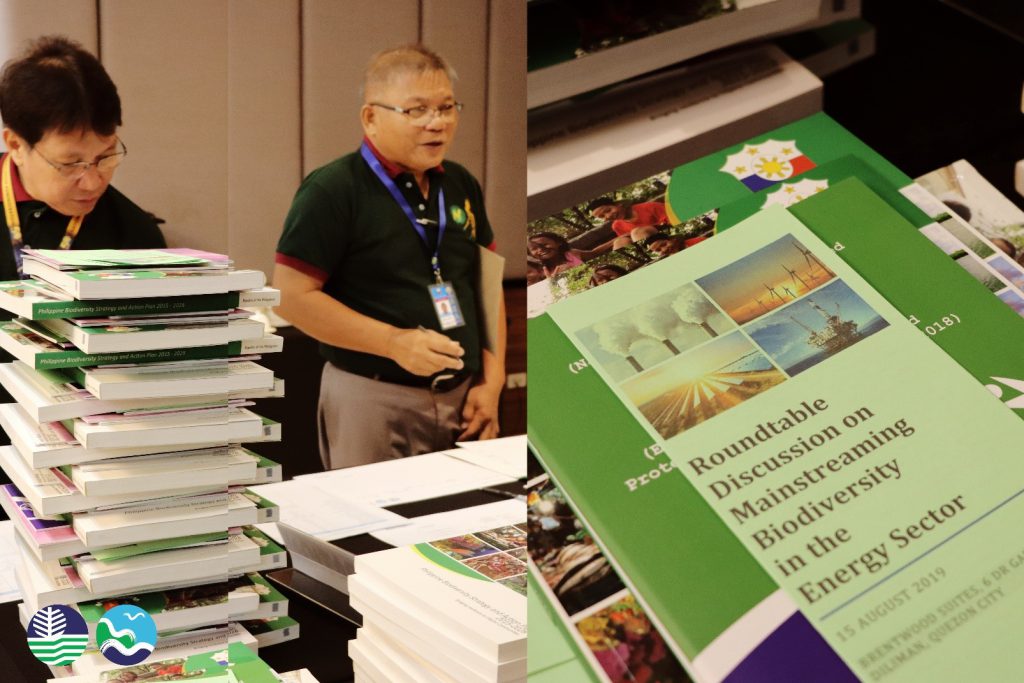
Left: Participants from different institutions line up to register. Right: Information materials on the Philippine Biodiversity Strategy and Action Plan (PBSAP) 2015-2028, RA No. 7586 (National Integrated Protected Areas System Act of 1992) and its amendment RA No. 11038 (Expanded National Integrated Protected Areas System Act of 2018), Gender and Development (GAD) as well as the RTD’s program and its rationale were given to the participants.
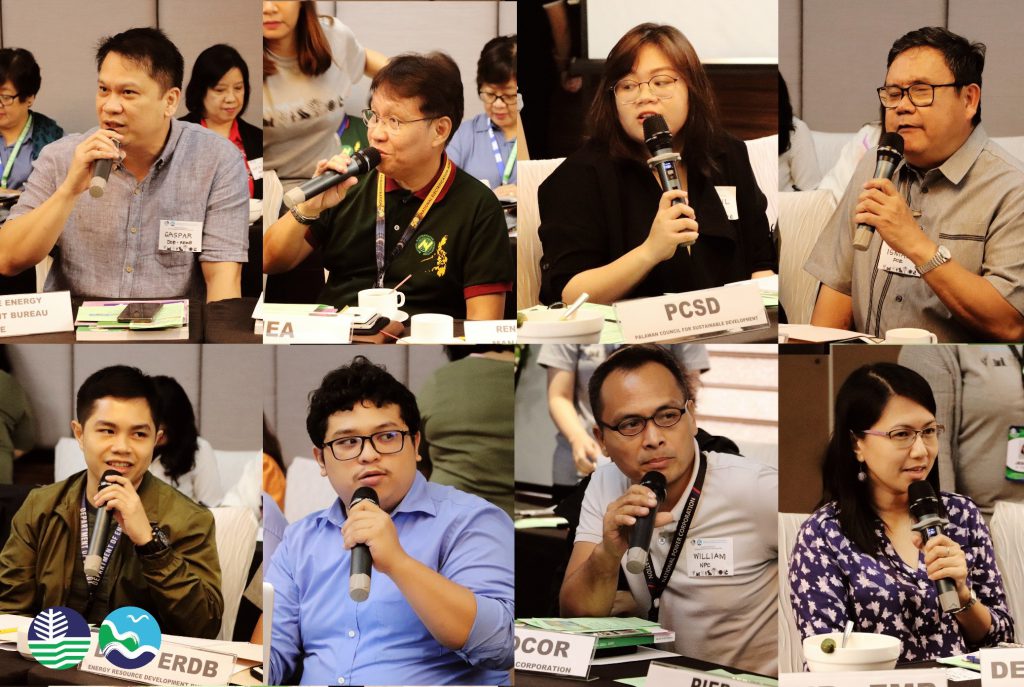
Some of the participants of the RTD introduced themselves along with their affiliations.
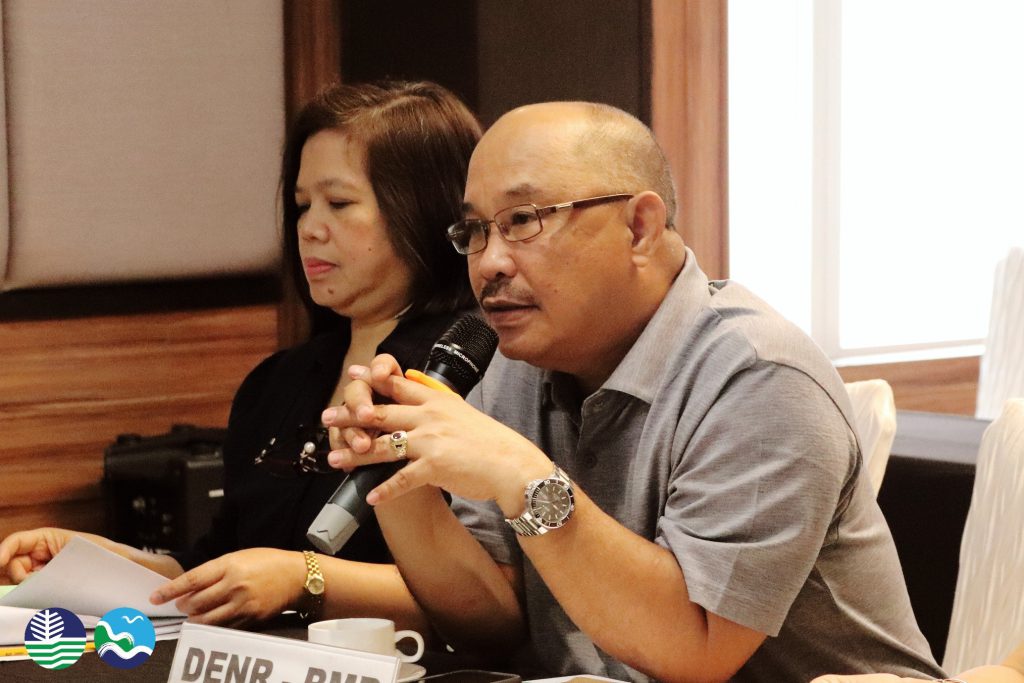
Assistant Secretary for Staff Bureaus and BMB Director, Ricardo L. Calderon delivered his opening remarks.He emphasized the importance of mainstreaming biodiversity in different sectors and encouraged participants to engage actively in the discussion.
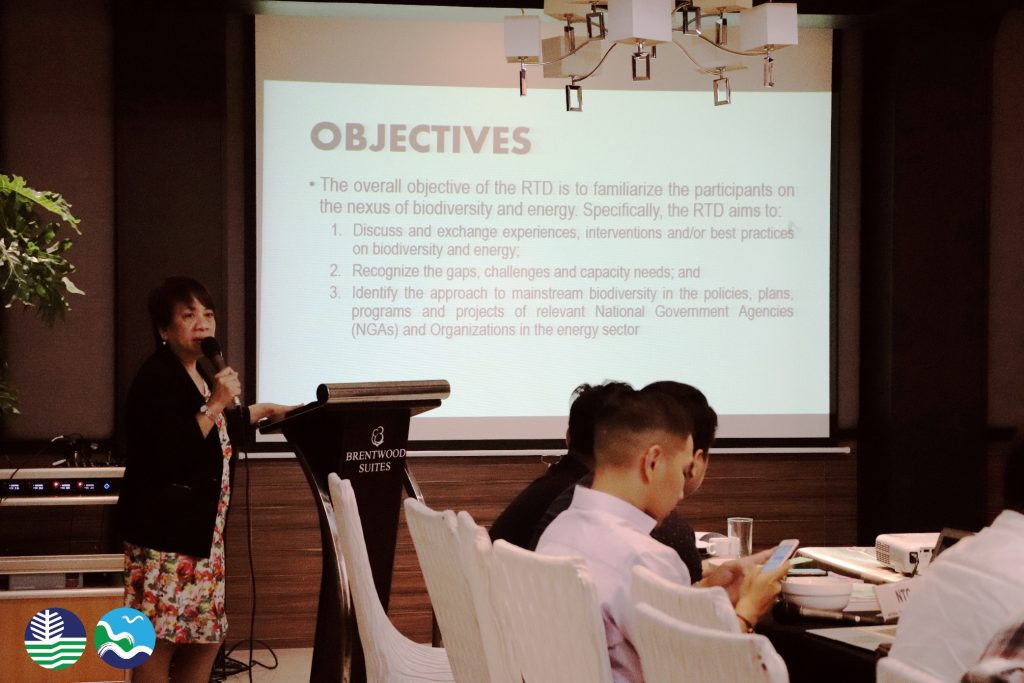
Dr. Jean Caleda, RTD facilitator presented the rationale and objectives to the participants. Dr. Caleda highlighted that the RTD will tackle connecting links of biodiversity and energy.
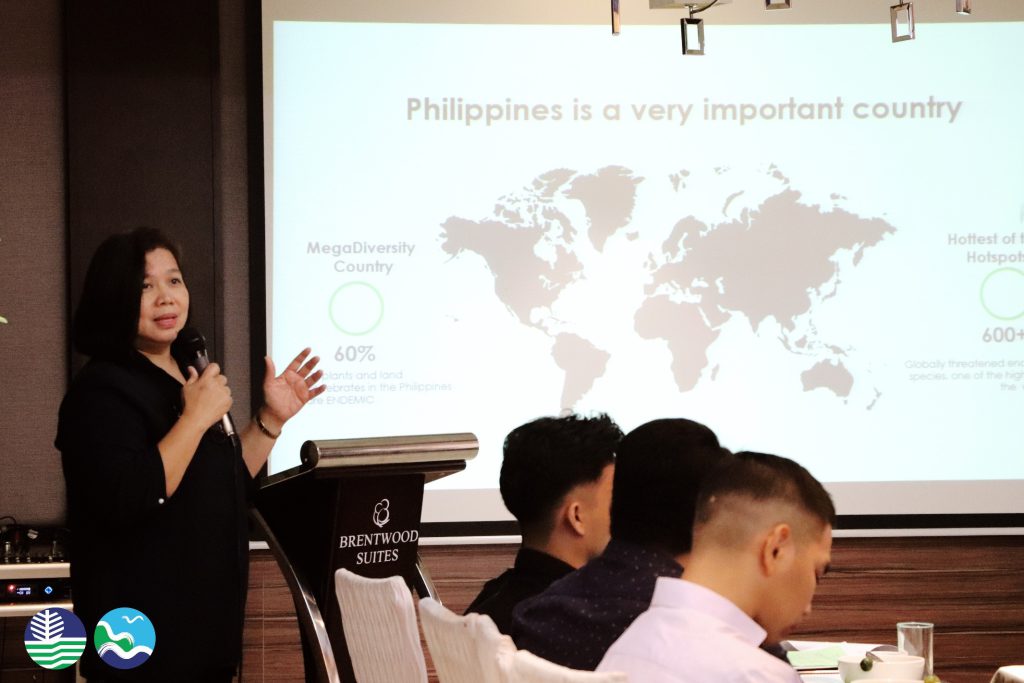
Assistant Director of BMB, Armida P. Andres explained why the Philippines is a mega diversity country, at the same time, is also a biodiversity hotspot. Hence, it is very important to address biodiversity concerns in different sectors such energy.
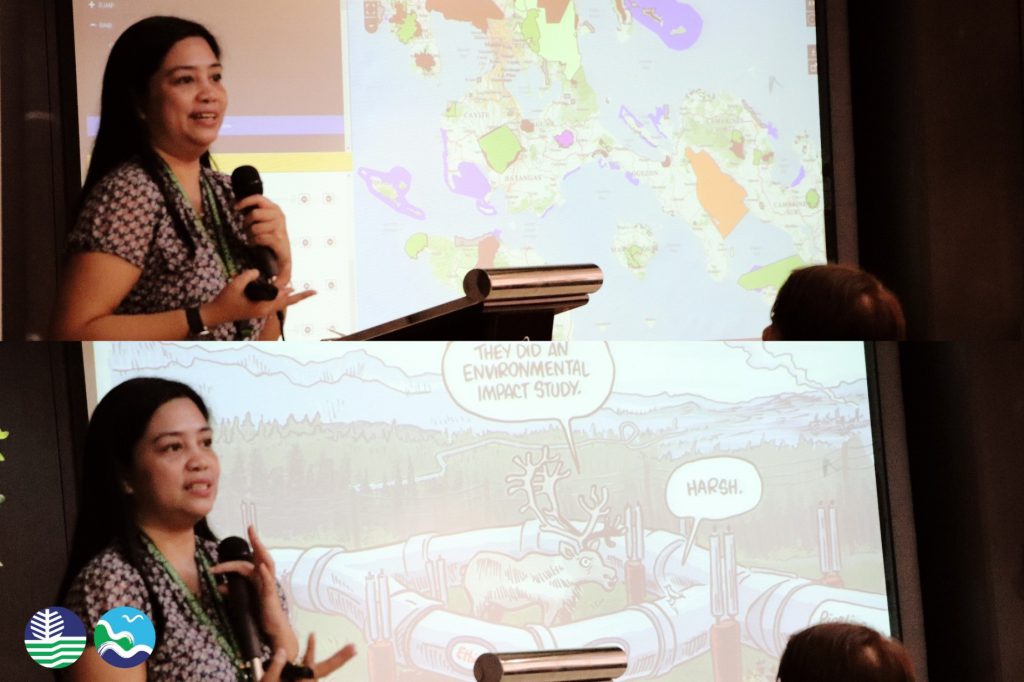
Ms. Regina Paula D. Eugenio, of the Environmental Management Bureau the Environmental Impact Assessment (EIA) showed the different sectors utilizing land areas of the Philippines and how they overlap. She explained the EIA process and how biodiversity concerns can be integrated in the review of proposed projects. Under the EIA process, Environmentally Critical Projects (ECP) and projects located in Environmentally Critical Areas (ECA) are required to secure an Environmental Compliance Certificate (ECC). Ms. Eugenio ended her presentation with a cartoon that shows that EIA is a critical and important tool that can be utilized in examining threats to wildlife and their habitats.
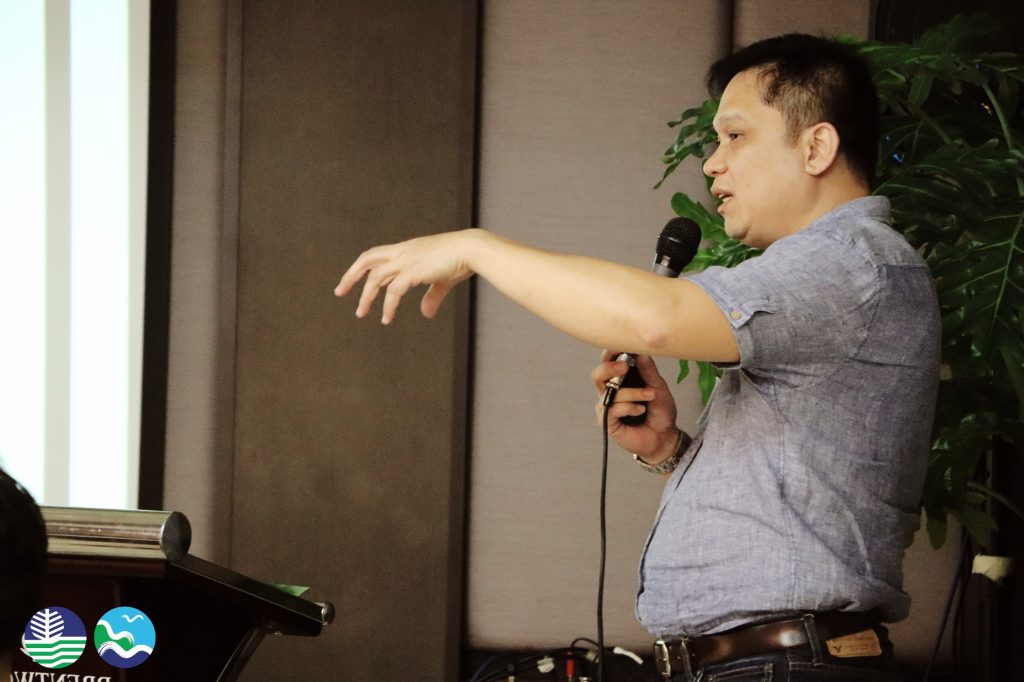
The next speaker was Mr. Gaspar Escobar, Jr., Chief of Technical Services and Management Division of the Department of Energy (DOE). He gave the overview on the renewable energy program of the DOE and its link to biodiversity. Mr. Escobar’s presentation included the importance of renewable energy and its benefits to the people. Specifically, he cited the case of Typhoon Haiyan/ Yolanda victims wherein solar energy served as one of the immediate solution to the electricity needs of the people during calamity. He also discussed the negative effects of using renewable energy. Thus, he recommended that policies and programs to minimize the negative impacts of RE on biodiversity are necessary. He also advocated for the passage of the land-use bill.
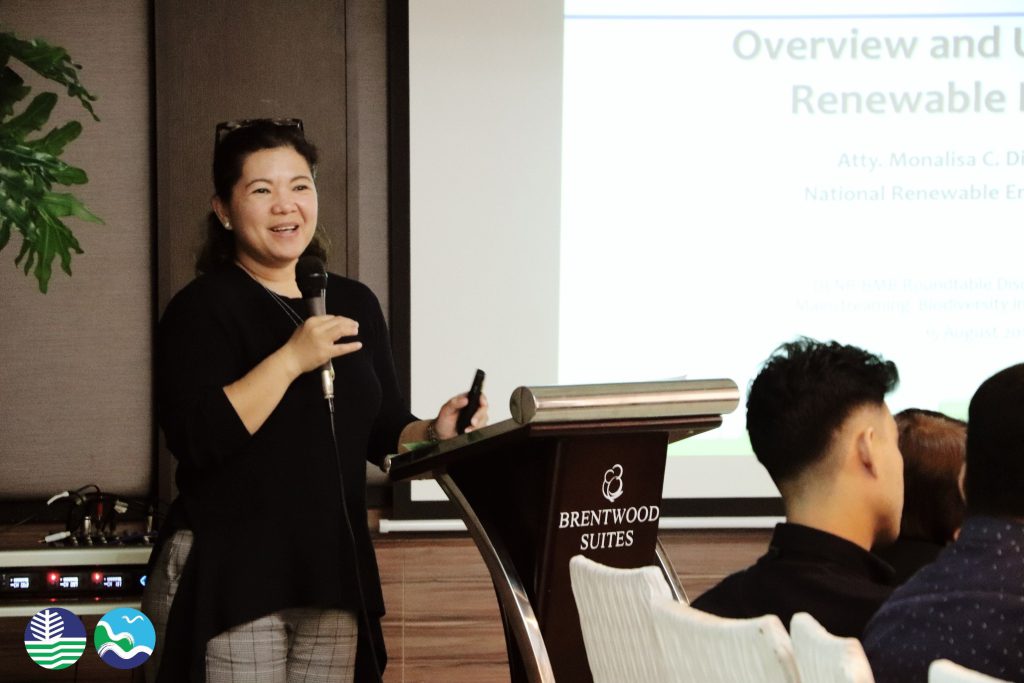
Atty. Monalisa C. Dimalanta, chairperson of the National Renewable Energy Board expounded Mr. Escobar’s presentation. She further discussed the updates on renewable energy since the passage of RA No. 9513. The different incentives include the production of 102,090 green jobs, 4,701.68 megawatts from the projects, PhP 185.09 billion investments, and projects that were assessed through EIAs.
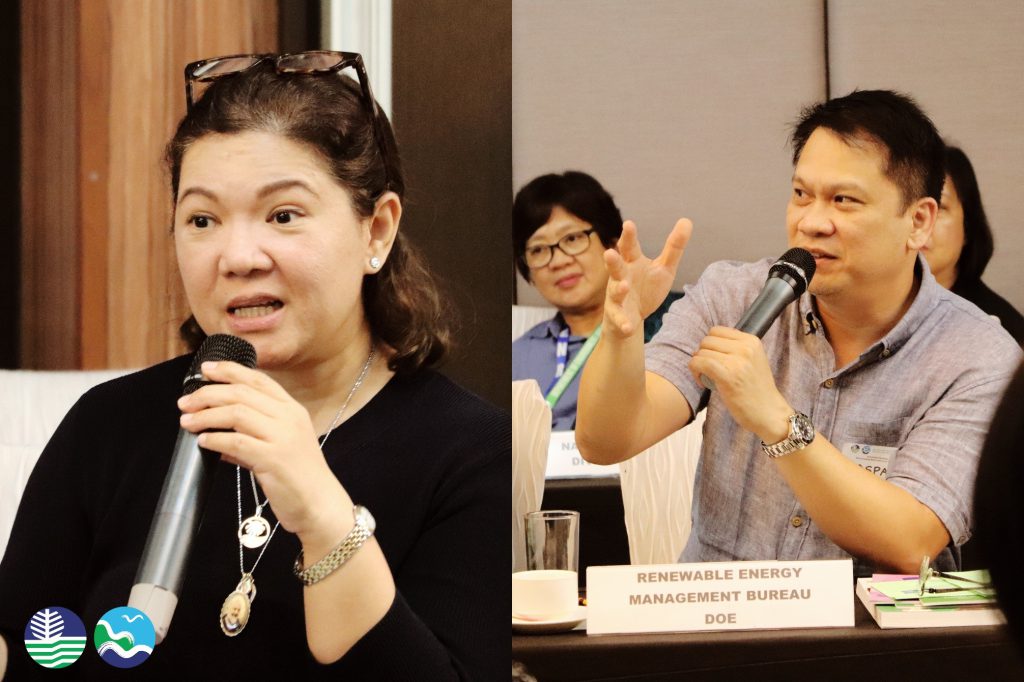
Atty. Dimalanta and Mr. Escobar addressing the different inquiries during the open forum in the morning session on which types of renewable energy presented are the most efficient. They explained different technologies require different expertise.
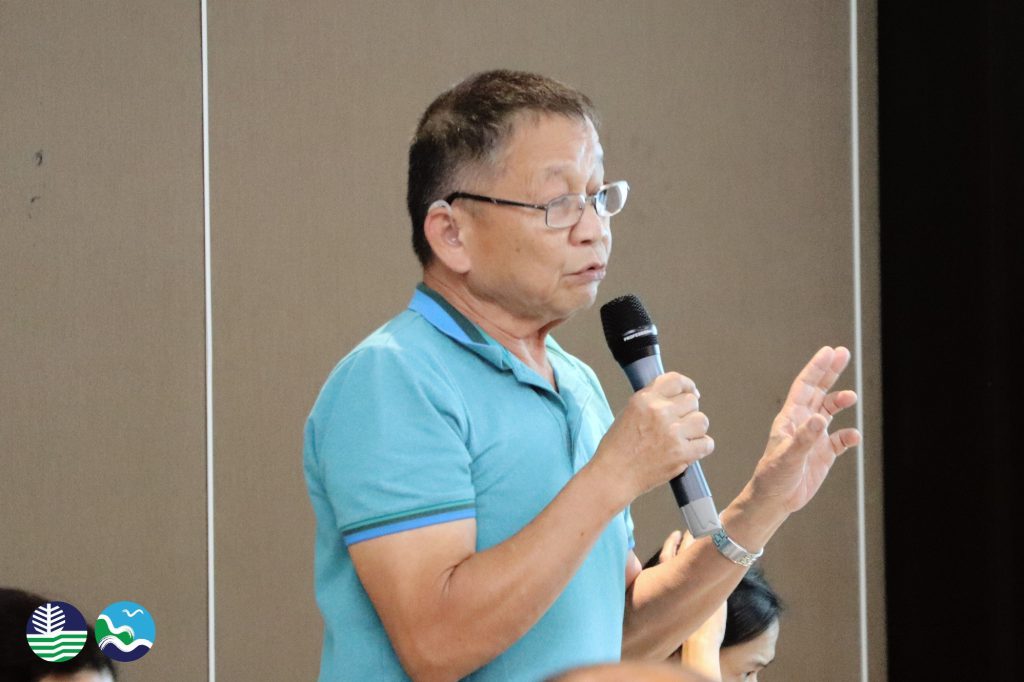
Mr. Carlo C. Custodio gave a short lecture on the effects of renewable energy on biodiversity. Some of these are habitat loss for birds, mammals, and fish, the proliferation of invasive species, and the accumulation of toxic run-off. He suggested the Strategic Environment Assessment (SEAs) as an alternative process for reviewing environmentally critical projects due to the insufficient reviewers for the EIA.
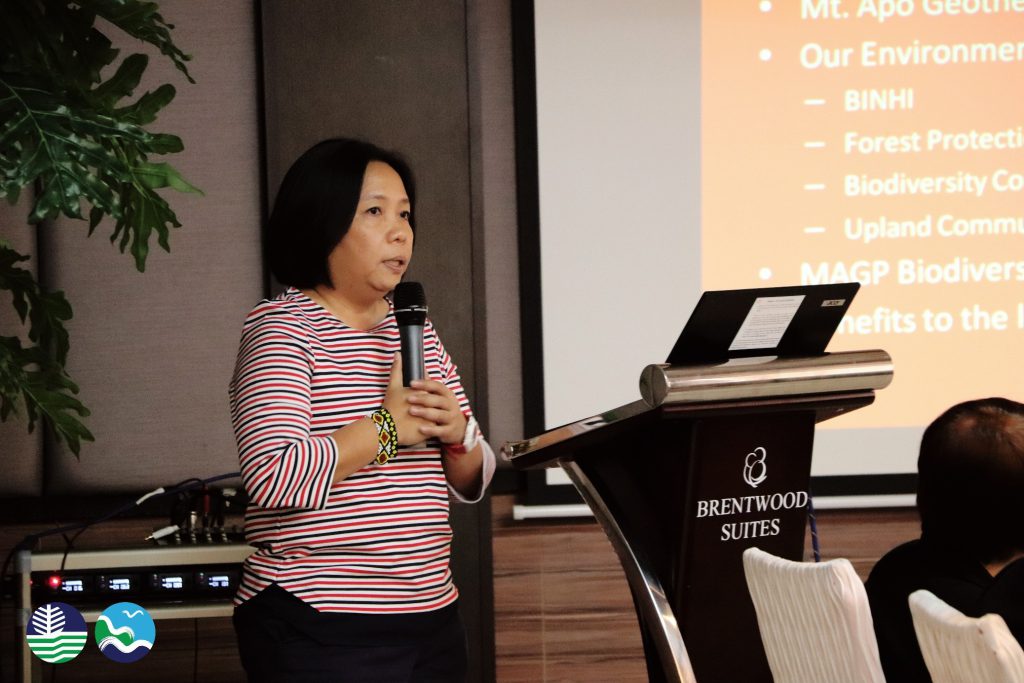
The afternoon session started with Ms. Maria Nancy Ibuna’s discussion on EDC operations within Mt. Apo Natural Park. She introduced EDC and highlighted their environment related programs, such as BINHI, Forest Production, Biodiversity Continuity Management, and Upland Community Management.
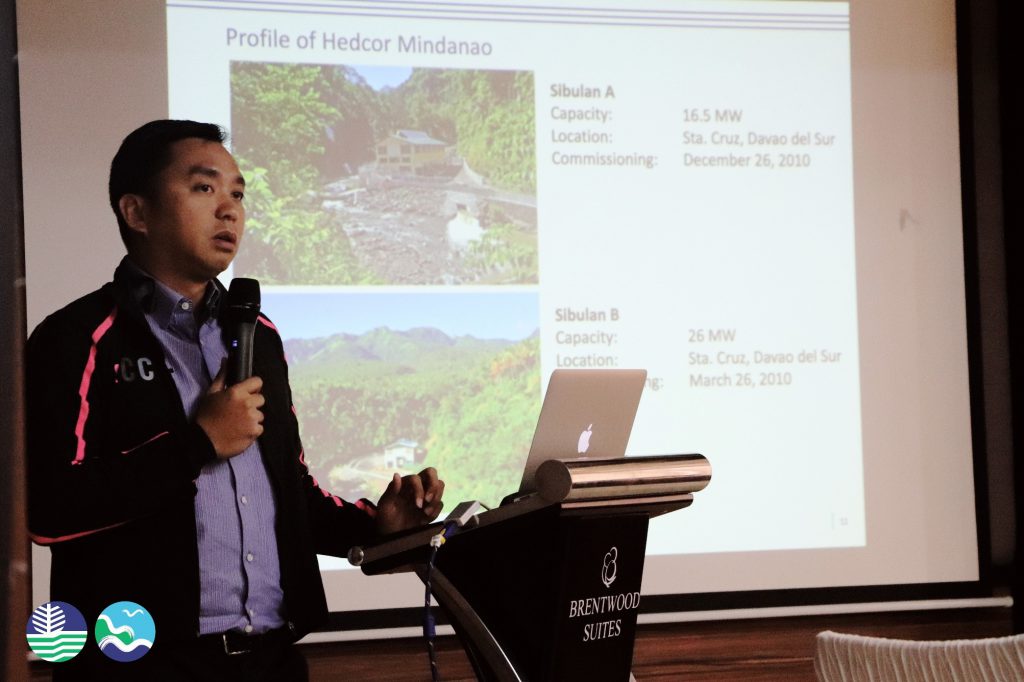
Mr. Marco Carlos, of Aboitiz Power Company discussed their project within Mt. Apo Natural Park (HEDCOR), and the Sarangani Coal Plant located in Bayan ng Maasim, Sarangani. His presentation included the introduction of their company through its mission and vision, the site of the coal dome along with its different facilities, and the different environmental-related activities.
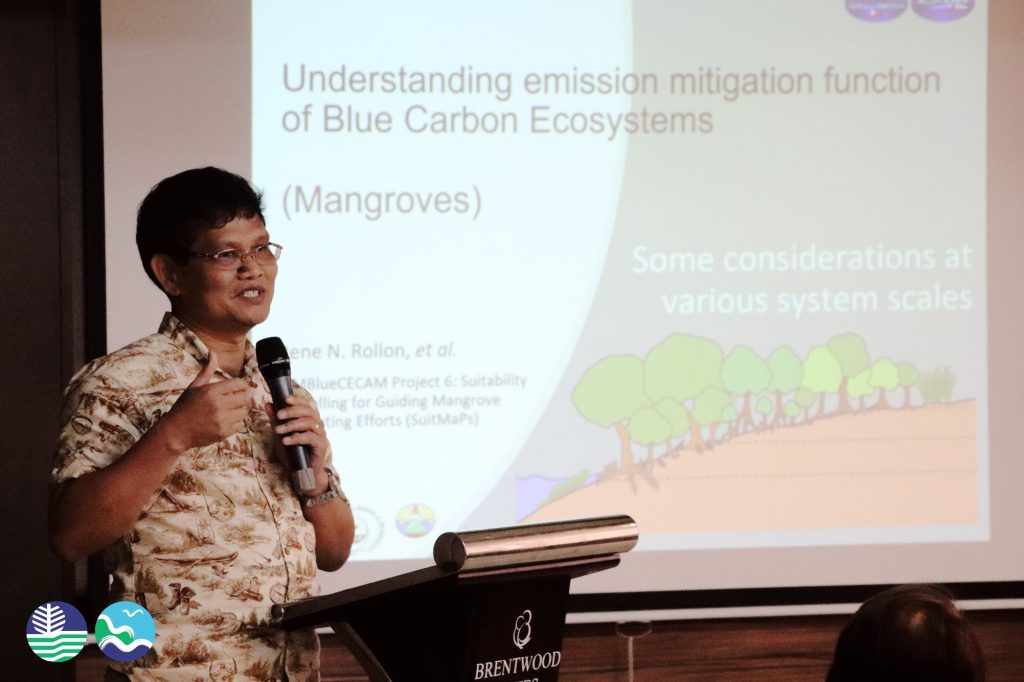
The last speaker is Prof. Rene Rollo from the Institute of Environmental Science and Meteorology, UP Diliman. His presentation focused on Blue Carbon Strategy to mitigate emissions from the energy sector. Prof. Rollo presented estimates on carbon emissions and sequestration.
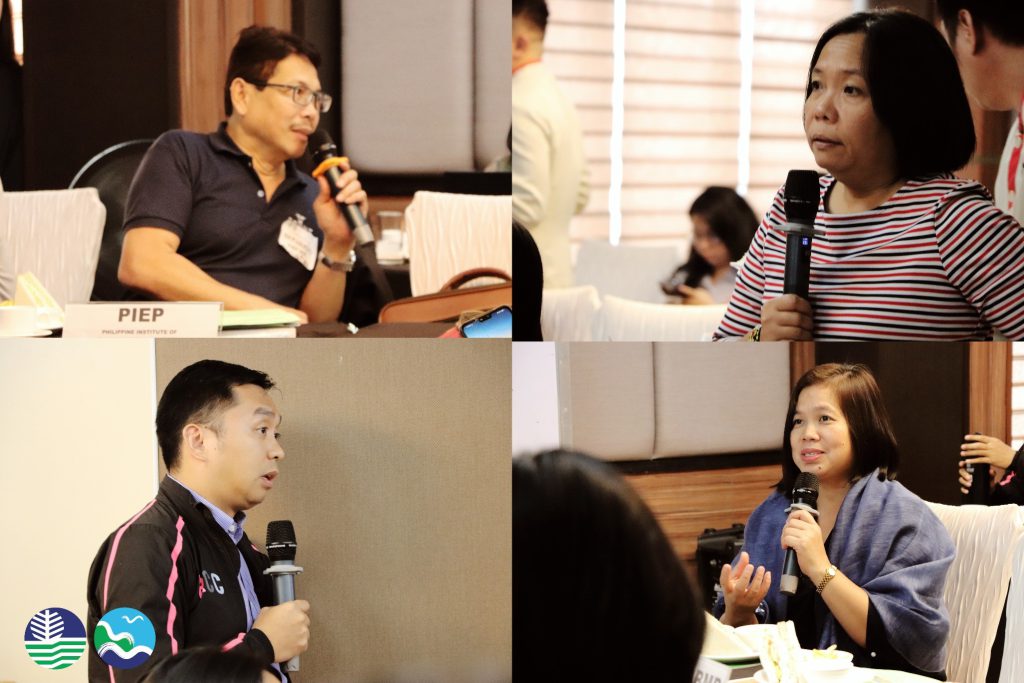
The afternoon session for the open forum is as fruitful as the morning session. One of the concerns raised to the private sectors was the program on fire hazard or firefighting in their respective renewable energy site. According to the representatives from EDC and Aboitiz Power Company, they have existing programs but will also consider the improvements suggested in the discussion.
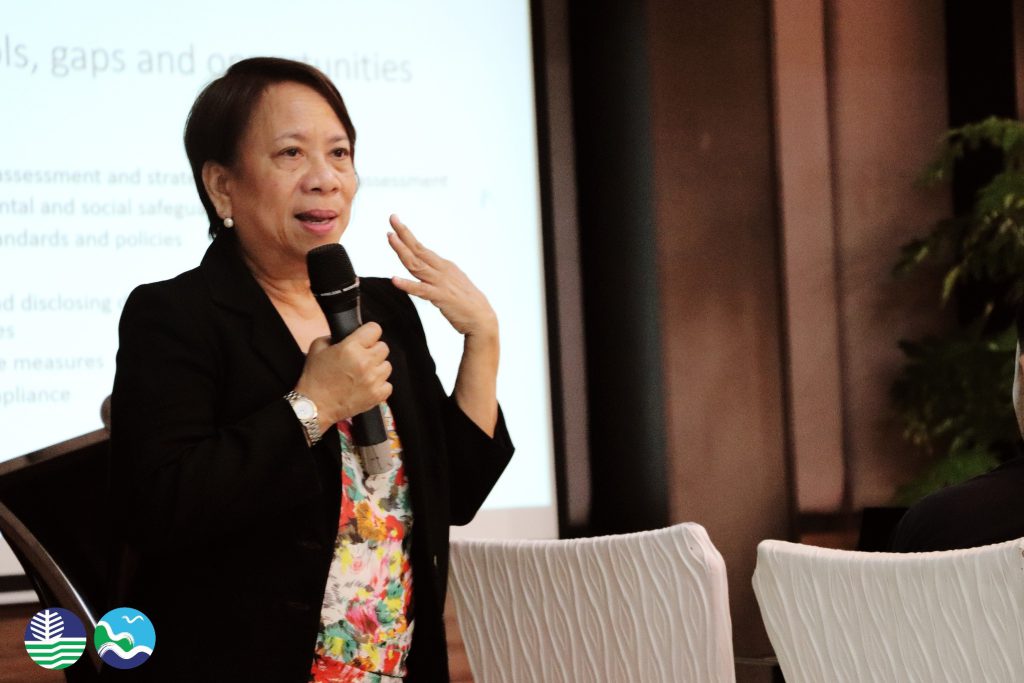
Dr. Caleda synthesized the points raised in the RTD. She emphasized that the energy sector is not just focused on generation and production but in transmission and distribution as well. Dr. Caleda also discussed that while energy depends on varying degrees on biodiversity and ecosystem services, energy also impacts biodiversity. Hence, the main aim of mainstreaming biodiversity in the sectors is to avoid, reduce, or mitigate any negative impact on biodiversity.
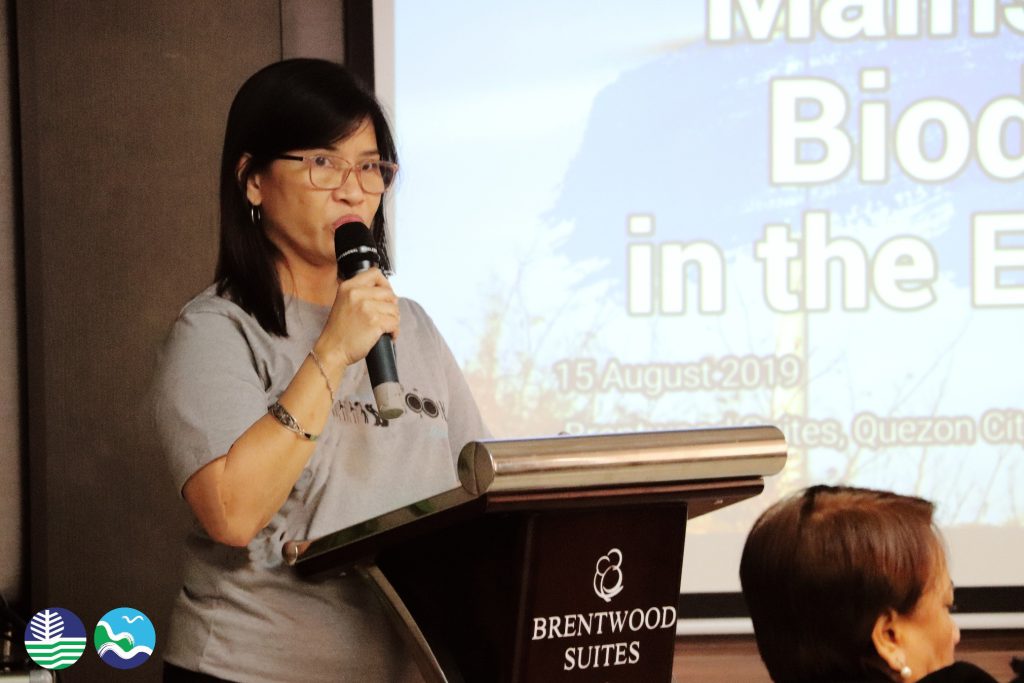
The program ended with BMB’s OIC Chief of the Biodiversity Policy and Knowledge Management Division, Ms. Nancy R. Corpuz’ closing remarks. She manifested that RTDs are not conducted to create new paradigms, but rather to integrate biodiversity into the existing structures and systems. She hoped that the discussions enlightened the participants on how to work together to always consider biodiversity with respect to agency and sectoral mandates.
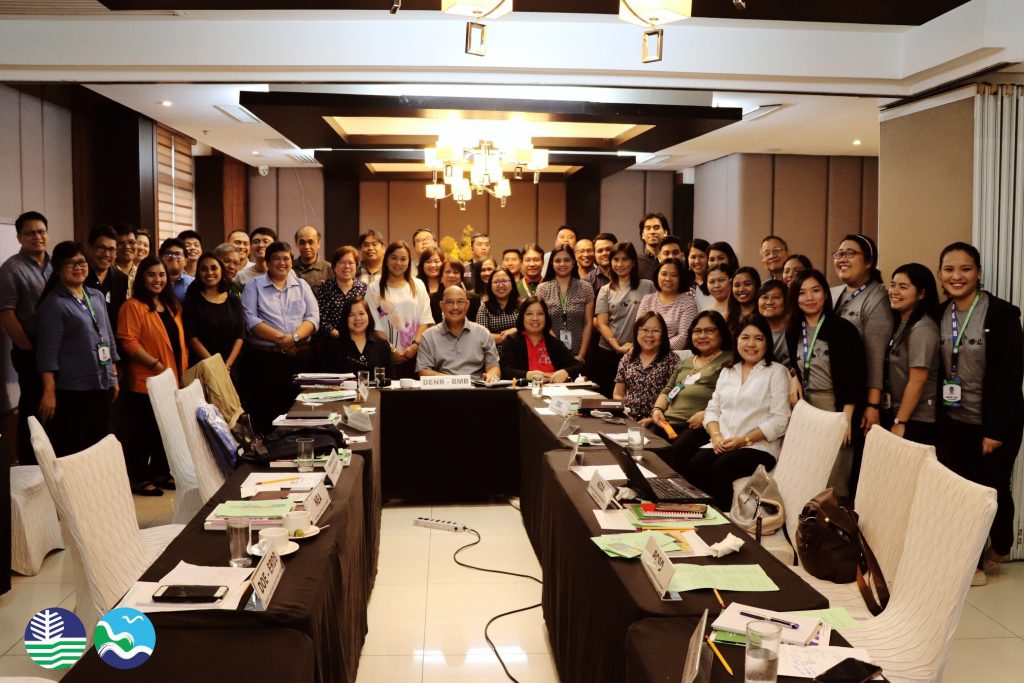
The participants, and organizers of the RTD.



